
December’s Topic of the Month – Stress Management and Relaxation
 December 21st, 2016
December 21st, 2016 Nakita Cambow
Nakita Cambow Blog
Blog 0 Comments
0 Comments
Stress is often reported as a trigger for lupus flares and therefore managing stress levels should be an important aspect of health care for anyone with lupus. There are many different ways that you can reduce the impact of stress in your life and improve your overall wellbeing.
Stress and Lupus
Many studies have suggested that lupus can flare during times of stress. This has been shown to occur with major stressful events (such as divorce or the death of a loved one) as well as with regular stress (such as ‘daily hassles’). In addition, certain lupus symptoms, such as having difficulty with memory (brain fog), have been associated with increased amounts of stress as well.
“I really struggle to relax and stress makes my lupus so much worse.”
 Experiencing stress while having a chronic disease, such as lupus, can become a vicious circle. People who have lupus and experience stress can develop increased flares of their lupus. A lupus flare is an additional stressful event in itself. Therefore, it would seem important that people who have lupus should learn stress reduction techniques as a part of treating their lupus.
Experiencing stress while having a chronic disease, such as lupus, can become a vicious circle. People who have lupus and experience stress can develop increased flares of their lupus. A lupus flare is an additional stressful event in itself. Therefore, it would seem important that people who have lupus should learn stress reduction techniques as a part of treating their lupus.
A study in 2010 taught a group of lupus patients how to handle stress using cognitive behavioural therapy (CBT). They found that the group of patients who learned appropriate ways of dealing with stress ended up with decreased depression, anxiety, daily stress, and symptoms such as pain. They also had an overall better quality of life compared to the lupus patients who did not learn how to deal with stress. Therefore it is important to learn to manage stress appropriately for your treatment.
“I now have cognitive behavioural therapy every week and she teaches me mindfulness too. It’s very helpful. It’s been a godsend.”
Stress Management
 There’s no quick-fix cure for stress, and no single method will work for everyone. However, there are simple things you can do to change the common life problems that can cause stress or make stress a problem. These include relaxation techniques, exercise and talking the issues through.
There’s no quick-fix cure for stress, and no single method will work for everyone. However, there are simple things you can do to change the common life problems that can cause stress or make stress a problem. These include relaxation techniques, exercise and talking the issues through.
Recognising the signs and symptoms of stress will help you figure out ways of coping and save you from adopting unhealthy methods. You can get an idea of how prone to stress you may be and what areas of your life may be causing you the most stress by completing Stress Management Society’s “Individual Stress Test” online HERE. (Please be aware that the Stress Management Society is not a registered charity, but a limited company).
Here is a list of various stress reduction techniques that you could try; some include links to external websites with more information; some relaxation techniques and therapies are covered in the second half of this article.
- Learn to say “no” to increased amounts of work and duties (When you have children, it is even more important to say “no” to additional activities other than what is immediately important to your family and your health.)
- Learn to ask for help in doing activities.
- Prioritise the important things in your life; cut out activities that are less important.
- Learn to practice good time management (prepare well ahead of time for any major activity).
- Do not think negative things about yourself – Learn to say positive things to yourself and compliment yourself for doing things well.
- Learn not to argue with others. Learning and accepting that everyone has differing opinions or ways of doing things and that many conflicts are not very important is essential. Learn to take a deep breath, relax, leave before an argument begins or before you say something you may regret.
- Consider counselling to learn better communication skills if you have difficulties with relationships.
- Learn to live at or below your means. Learning to stay out of debt can greatly decrease stress.
- Plan specifically for periods of rest and relaxation in your routine every day.
- Schedule in sufficient sleep each night.
- Participate in regular physical activity (exercise). This could include relaxing exercises such as yoga and/or tai chi.
- Maintain a healthy, balanced diet.
- Consider attending lupus support groups to learn techniques for dealing with lupus, stress and relationships.
- Do deep breathing exercises.
- Practice mindfulness meditation.
–
Request a free guide for dealing with stress from the Stress Management Society HERE. (Please be aware that the Stress Management Society is not a registered charity, but a limited company).
“I acknowledge that sometimes I need extra hours of sleep or not going to some parties, and it is ok. I won’t let anyone shame me into attending all of them.”
“Close your eyes for ten minutes in a quiet room and just concentrate on your breathing two or three times a day.”
Relaxation Techniques
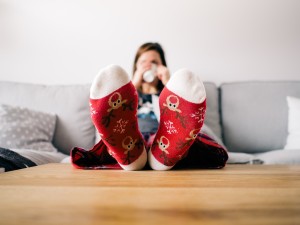 No one can avoid all stress, but you can help to counteract it by learning how to relax effectively. By relaxing you can;
No one can avoid all stress, but you can help to counteract it by learning how to relax effectively. By relaxing you can;
- Decrease your heart rate
- Make your breathing slower and deeper
- Decrease/stabilise blood pressure
- Relax your muscles
–
Relaxation can help you look after your wellbeing when you’re feeling stressed or busy. Relaxation doesn’t have to take up lots of your time – just stepping away from something stressful for a few minutes or taking time away from your normal routines and thoughts can give you enough space and distance to feel calmer. A few examples of things you could do to relax include;
Take a break – read a book or magazine, have a bath, watch a film, play with your pet or try out a new recipe
“I found a free app called ‘Chill’ (iPhone & Android) which helps me to remember to relax 3-4 times a day. It sends little gongs with reminders to breathe.”
 Listen to music – Turn up the volume and listen to your favourite songs. Focus on the music and see if you can pick out the different instruments.
Listen to music – Turn up the volume and listen to your favourite songs. Focus on the music and see if you can pick out the different instruments.
“Relaxation CDs are a good de-stresser.”
“I have a really hard time sleeping, especially in winter when pain gets even worse. As a result I get tense, overtired, grumpy and stressed. I also have anxiety issues. I’ve tried listening to music before going to bed, but regular earbuds hurt my ears and the over-ear headphones are of course impossible to sleep in. Recently, I scored ‘sleep-phones’ – these are literally small stereos mounted into a type of headband which you can wear while sleeping. Mine are Bluetooth enabled so I run sleep apps on my iPhone (with binaural feedback which is supposed to have an almost subliminal effect on the brain for relaxation). They are light, comfortable to wear, the headband is washable, and (even when I’m lying on my side) I can’t really feel the speakers at all. These things are amazing, truly.”
“I have a CD I made up which only includes positive, empowering and happy songs. There’s nothing like singing at full volume to lift the spirits.”
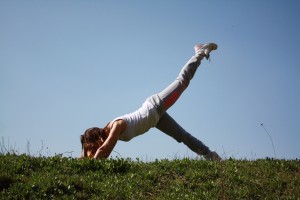 Exercise – Relaxation doesn’t have to mean sitting still. Gentle exercise can be great for relaxation too. Look for a class that teaches yoga, Pilates or practice gentle stretching. For more advice about exercise and lupus, read our blog article HERE.
Exercise – Relaxation doesn’t have to mean sitting still. Gentle exercise can be great for relaxation too. Look for a class that teaches yoga, Pilates or practice gentle stretching. For more advice about exercise and lupus, read our blog article HERE.
“I do a fair bit of yoga. Being a bigger lass, I tend to follow the ‘Curvy Yoga’ program designed by a yoga instructor in the US. It’s not really even about being able to do poses and be a pretzel, but more a state of mind thing in her teachings. If all I can do that day is sit on my yoga ball and take some deep breaths, yay, I’m doing yoga. I usually feel a lot better for it.”
Get creative – Tapping into your artistic side can help you feel more calm and relaxed. Try painting, drawing, baking, playing a musical instrument or anything else which you enjoy. Try not to worry about the finished product, but focus on enjoying yourself.
“I find writing and art journaling very good ways to unwind. Sometimes when the pain gets too much to bear I write all the negative words to do with the pain down in my journal and maybe do some drawing/doodling. Once it is written in ink for me it is a kind of release. I can do this any time of day or night. When I am awake at three in the morning because I want to cut away my itchy skin because the medication for pain relief is not working, just picking up a pen, opening a double clean cream page and filling it with all I am feeling is wonderful.”
 “I’m a knitter. With special cubic needles which are easy on the hands I can do plenty of mindless knitting, going ‘knit one, purl one’ or counting stitches in my head. I do this and get lost in an audiobook, BBC Radio 4, or, for me, the Bible being read. My pain management specialist highly approves of me being a compulsive knitter. My occupational therapist approved a lot too. The added benefit is that it also helps with my Raynaud’s.”
“I’m a knitter. With special cubic needles which are easy on the hands I can do plenty of mindless knitting, going ‘knit one, purl one’ or counting stitches in my head. I do this and get lost in an audiobook, BBC Radio 4, or, for me, the Bible being read. My pain management specialist highly approves of me being a compulsive knitter. My occupational therapist approved a lot too. The added benefit is that it also helps with my Raynaud’s.”
“A few years ago I took up crochet and it’s been wonderful. It’s meditative in nature and the tactile aspect also makes me so happy. Sometimes I’ve had very bad hand pain in the past, but since starting the crochet it’s actually improved vastly provided I don’t overdo things. If I crochet for an hour and then take a break I find I don’t struggle too much. I haven’t had the joint infiltration procedure done on my hands in two years, where I was having it every six months before.”
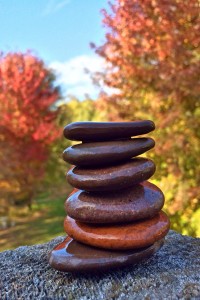 Spend time in nature – Spending time outside and in green spaces can be excellent for physical and mental wellbeing. Take a walk in the countryside or local park and allow yourself time to notice the trees, flowers and animals on your way. Gardening can also be a great way to relax. Remember, if you are spending time outside that you need to protect yourself against the sun. Learn more about this in our blog article HERE.
Spend time in nature – Spending time outside and in green spaces can be excellent for physical and mental wellbeing. Take a walk in the countryside or local park and allow yourself time to notice the trees, flowers and animals on your way. Gardening can also be a great way to relax. Remember, if you are spending time outside that you need to protect yourself against the sun. Learn more about this in our blog article HERE.
“I am so lucky as to be able to go for a walk along the beach; especially when the UV light is not strong, which is now in the winter months.”
“If you have the time and space a dog is a great friend and will encourage you to walk even on a bad day.”
 Disconnect from technology – Technology can be great for helping you to feel connected, but if you are using it a lot then it can also contribute to making you feel busy and stressed. Take short breaks (even an hour) away from your phone, computer and TV. Get more tips about not being a slave to technology HERE.
Disconnect from technology – Technology can be great for helping you to feel connected, but if you are using it a lot then it can also contribute to making you feel busy and stressed. Take short breaks (even an hour) away from your phone, computer and TV. Get more tips about not being a slave to technology HERE.
If you’ve tried self-help techniques and they aren’t working, you should go to see your GP. They may suggest other coping techniques for you to try or recommend some form of counselling or cognitive behavioural therapy.
If your stress is causing serious health problems, such as high blood pressure, you may need to take medication or further tests.
“I find going for a walk with my family helps or a relaxing bath, reading, resting, or spending time with my friends.”
Relaxation Therapies
Relaxation therapies comprise a very large group of interventions, including meditation, prayer, and many other techniques such as hypnosis to help decrease pain and anxiety;
“If I have the money I love a reflexology treatment – I literally fall asleep.”
 Hypnotherapy (hypnosis) can be included as a type of relaxation therapy where the hypnotherapist guides the individual into a heightened state of relaxation along with an increased focus in attention. It has been used for anxiety, smoking cessation, weight control, and to help decrease pain. You can learn more about the use of hypnotherapy and finding a suitable practitioner HERE.
Hypnotherapy (hypnosis) can be included as a type of relaxation therapy where the hypnotherapist guides the individual into a heightened state of relaxation along with an increased focus in attention. It has been used for anxiety, smoking cessation, weight control, and to help decrease pain. You can learn more about the use of hypnotherapy and finding a suitable practitioner HERE.
“I’d thoroughly recommend hypnotherapy for stress or pain relief. It can be done either face to face or by listening to mp3 recordings at your leisure. It’s relaxing, non-invasive and yet very effective. There are many different types of recordings out there, some good and some, quite frankly, just awful. It really depends on what each person needs.”
“I have some hypnosis apps on my phone by Mindifi (iPhone & Android). When I’m waiting for painkillers to kick in, or restlessly trying to cope with symptoms at night, I listen to them via earphones to block out other distractions and stop my mind wandering. They really help keep me calmer about the situation and deal with a few more hours in a bad day! I use the sleep ones. There are several options to choose, such as insomnia, peaceful sleep, relaxation etc. Although they are aimed at improving sleep, they are great for general stress management.”
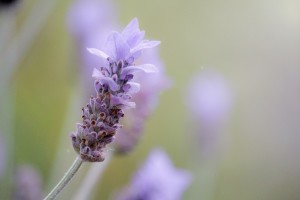 Aromatherapy uses the inhalation of essential oils from trees, herbs, and flowers to promote health and well-being. Examples of oils include chamomile, lavender, geranium, cedar, and lemon. Proponents of this form of therapy suggest that they can help with mood, sleep, decrease stress, and possibly help with pain and nausea. Research suggests that lavender and chamomile may help with sleep. According to The Lupus Encyclopedia, Donald E. Thomas, Jr. (2014), “There are no studies proving their use in lupus”.
Aromatherapy uses the inhalation of essential oils from trees, herbs, and flowers to promote health and well-being. Examples of oils include chamomile, lavender, geranium, cedar, and lemon. Proponents of this form of therapy suggest that they can help with mood, sleep, decrease stress, and possibly help with pain and nausea. Research suggests that lavender and chamomile may help with sleep. According to The Lupus Encyclopedia, Donald E. Thomas, Jr. (2014), “There are no studies proving their use in lupus”.
“I burn some lavender oil or use a roll on with various oils (those that are uplifting) during the day and those for stress. They are very effective.”
 Art therapy is a type of psychotherapy where the patient uses art to communicate. Patients do not need to have any art experience at all. It can especially be helpful to try to deal with the emotional stresses of illness. Learn more about art therapy and find a registered practitioner HERE.
Art therapy is a type of psychotherapy where the patient uses art to communicate. Patients do not need to have any art experience at all. It can especially be helpful to try to deal with the emotional stresses of illness. Learn more about art therapy and find a registered practitioner HERE.
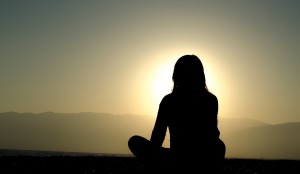 Meditation refers to a large group of practices used in religion as well as for secular (non-religious) purposes to change a person’s inward mode of consciousness. Prayer is one type of meditation. It often involves resting quietly, often with the eyes closed, concentrating on breathing, and sometimes involves saying words repeatedly (called a mantra). In complementary medicine, it is used to increase calmness and physical relaxation, to improve psychological balance, to cope with illness, or to enhance overall health and well-being. According to The Lupus Encyclopedia, Donald E. Thomas, Jr. (2014), “There are no studies using meditation for lupus, however, two studies have shown its usefulness for the pain and tenderness of rheumatoid arthritis”.
Meditation refers to a large group of practices used in religion as well as for secular (non-religious) purposes to change a person’s inward mode of consciousness. Prayer is one type of meditation. It often involves resting quietly, often with the eyes closed, concentrating on breathing, and sometimes involves saying words repeatedly (called a mantra). In complementary medicine, it is used to increase calmness and physical relaxation, to improve psychological balance, to cope with illness, or to enhance overall health and well-being. According to The Lupus Encyclopedia, Donald E. Thomas, Jr. (2014), “There are no studies using meditation for lupus, however, two studies have shown its usefulness for the pain and tenderness of rheumatoid arthritis”.
“For me meditation is first in my stress management techniques. Be at peace with myself. I also take part in religious activities such as prayers and retreats when possible.”
One form of meditation which is now widely practiced and recognised for various benefits to health and wellbeing is mindfulness. You can learn more about this practice HERE.
“There are some apps for that; Headspace (iPhone & Android) and Insight Timer (iPhone & Android).”
“I can add that mindfulness practice each day has helped me greatly.”
“During the day I meditate and often before going to bed I listen to a relaxation app. I have downloaded Buddhify (iPhone & Android), it has many short meditations. The other is Relax & Rest (iPhone & Android), it has 3 longer meditations. Both apps are free or a minimal one-time cost.”
***Please note that this article is written for informational purposes only and should not be a substitute for professional medical advice or treatment. Do not delay seeking or disregard medical advice based on information here. Always seek the advice of your local family physician or other qualified health professional before starting any new treatment or making any changes to existing treatment. It is also advisable to consult a medical professional before making any changes to diet or starting alternative remedies, which may interact with other medications.***
Thank you so much to everybody who submitted their tips and experiences for this month’s topic. We’re sorry if we weren’t able to use your comment in the article this time.

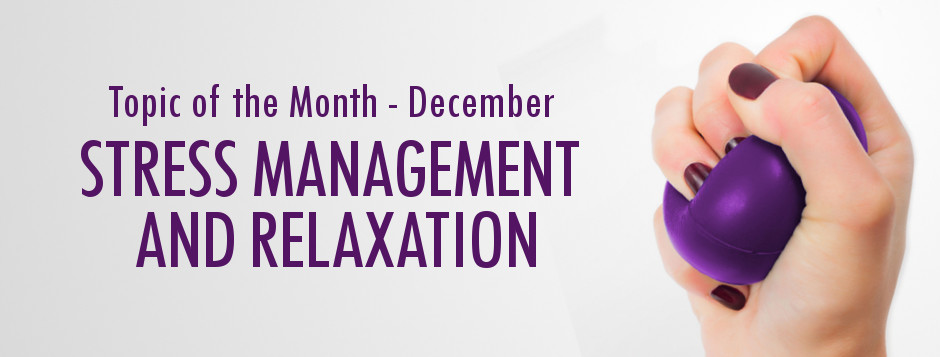

 ©2024 LUPUS UK (Registered charity no. 1200671)
©2024 LUPUS UK (Registered charity no. 1200671)